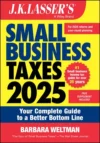How Much Disclosure Is Needed to Avoid an Understatement of Tax Penalty?
The IRS has provided guidance on what disclosure is treated as “adequate” to avoid a 20% penalty for a substantial understatement of tax (Rev. Proc. 2019-42, updating Rev. Proc. 2019-9). Here’s the potential penalty and how to avoid it with respect to an income tax return filed on a 2019 tax form for a taxable year beginning in 2019 and to any income tax return filed on a 2019 tax form in 2020 for a short taxable year beginning in 2020.
Substantial understatement penalty. This penalty results if amount of the understatement of income tax exceeds the greater of (i) 10% of the amount of tax required to be shown on the return for the taxable year or (ii) $5,000. For owners of pass-through entities who claim the qualified business income deduction, there is a substantial understatement of income tax if the amount of the understatement exceeds the greater of (i) 5% of the amount of tax required to be shown on the return for the taxable year or (ii) $5,000. And there is a special rule for corporations.
There is also a penalty on a tax return preparer who prepares a return or a claim for refund reflecting an understatement of liability due to an “unreasonable position” if the preparer knew or should have known of the position. A position is generally treated as unreasonable unless (i) there is or was substantial authority for the position, or (ii) the position was properly disclosed and had a reasonable basis. These exceptions do not apply to positions related to tax shelters and reportable transactions.
What is adequate disclosure? There are various rules to keep in mind:
- All forms and attachments must be completed in a clear manner
- Money amounts entered on a form must be verifiable
- For transactions between related parties, the relationship must be disclosed
- If there is no preprinted description of an item on a form, a description must be entered (e.g., “bad debt”).
Note: Even if there is adequate disclosure, a penalty can only be avoided if there is a reasonable basis for the position on the return and it’s properly substantiated. Special rules apply to tax shelters and reportable transactions.
Tenancy by the entireties
A joint tenancy in real property in the name of both husband and wife. On the death of one tenant, the survivor receives entire interest.



